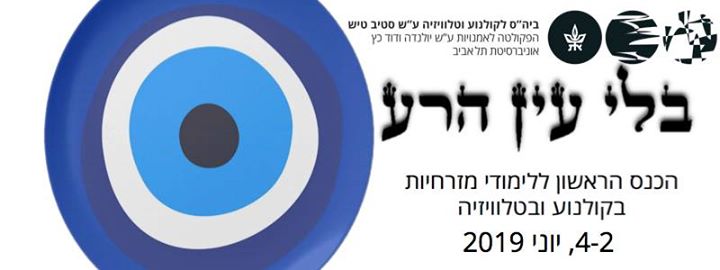Sun 2 June 2019 | 2:09 pm - 5:09 pm
Tel Aviv University - Tel Aviv University, Tel Aviv,

** IN HEBREW **
In 2019, it will be thirty years since the publication of Ella Shohat’s groundbreaking book, Israeli Cinema: East / West and the Politics of Representation. This book is not only a starting point for academic research on Israeli cinema, but also a point of reference for new critical thoughts in different fields of knowledge that undermined and decoupled opposites such as East / West, Jews / Arabs, tradition / modernism, control / control and presented an alternative to scientific disciplines that adopted Orientalist and racist point of view. Shochat’s call for Mizrahi studies, as a critical relational approach that moves beyond nationality and emphasizes the unfinished process of identity over time and space, has in recent years resonated both in the visual media and in the research discourse. Today, we are witnessing a multiplicity of Mizrahi voices, sometimes contradictory and contradictory, that invite renewed attention to the possible links between Orientalism and cinema, television, video art and digital media.
We invite scholars to present research that expresses contemporary voices of the Mizrahi discourse, including studies comparing them with his matrimonial voices. The conference is also interested in a variety of readings that examine the appearance and meaning of Mizrahiism in the political, technological and artistic representation and visibility of the present era. We will present research that draws on the tradition of film research (fiction and documentary), television, video art and media, along with studies that apply to the text and the artistic context tools and concepts from other disciplines: philosophy, literary research, cultural studies, theology, gender studies, anthropology, .
Researchers and researchers are invited to submit proposals related, inter alia, to the following issues. The films mentioned may be linked to a variety of categories, and do not represent the entire Eastern work:
• The crystallization and dissolution of Arab and Jewish Arab identity and previous identities, intersectality, (forget about Baghdad, pigeon blower, convenient coffee, exile), Levantine identity (father’s language, the house on Chelouche Street).
• The trauma of immigration in Mizrahi cinema, intergenerational relationships (black, my fantasy, three mothers); History, memory and cinema committees (you heard about the Panthers, the Black Panthers speak, the spirit of Kadim, a Moroccan chronicle, the pioneers, Dimona Twist, Salah here is the Land of Israel); Family and relationships (seven, the good words).
• Mizrahi and the ethical turning point in film and television.
• Mizrahi Zionism and Israeli cinema and television (Zagury Empire, ethnic demon).
• Orientalism and activism in cinema, television, and media (Prophets: Operation Amram); Representation and recalcification (nests and flowers – the new elites).
• Orientalism in communities outside of Israel; Jews and Jewish Representations in Cinema, Television, and Media of Arab, Muslim, and Mizrachi Countries of Origin (Tinnner-Jerusalem, Echoes of the Malach, Where Did You Go ?, Marocains Juifs: Destins contrariés); Orientalism and cultural identity, Orientalism, nostalgia and the Middle East (Sea of Tears, Square of Dreams, Ballad for Spring Crying, Iraq Narral, Arabic film).
• Mizrahi identity and critique of liberalism and post-liberalism; Orientalism, Judaism and the theological shift in cinema and television; Mizrahi, and the community (overseers, Avinu, Yismach Chatani, Hakafot, the unofficial ones, Shir Yedidya, Shababnikim).
• Orientalism and the neoliberal age: capitalism, status, globalization, Americanization, individualism, and a “neoliberal” free economy (NIS 30 per hour).
• Feminism and Orientalism (orange people, get, and take you a wife, light, Aviva my love, Yismach Ghanni, Alice never lives here, on her, Aisha, the wall); Queer and Eastern studies; White and Ashkenazi.
• Production and audience studies: creators and creators with an oriental identity; Oriental audiences in cinema, television and media; Contemporary research on landmarks in cinema and television (The House on Chelouche Street, Black, Light from the Loose, Late Marriage, Michel Ezra Safra and Sons, Bethlehem, Bat Yam, New York).
Check Out The Event Page On Facebook
